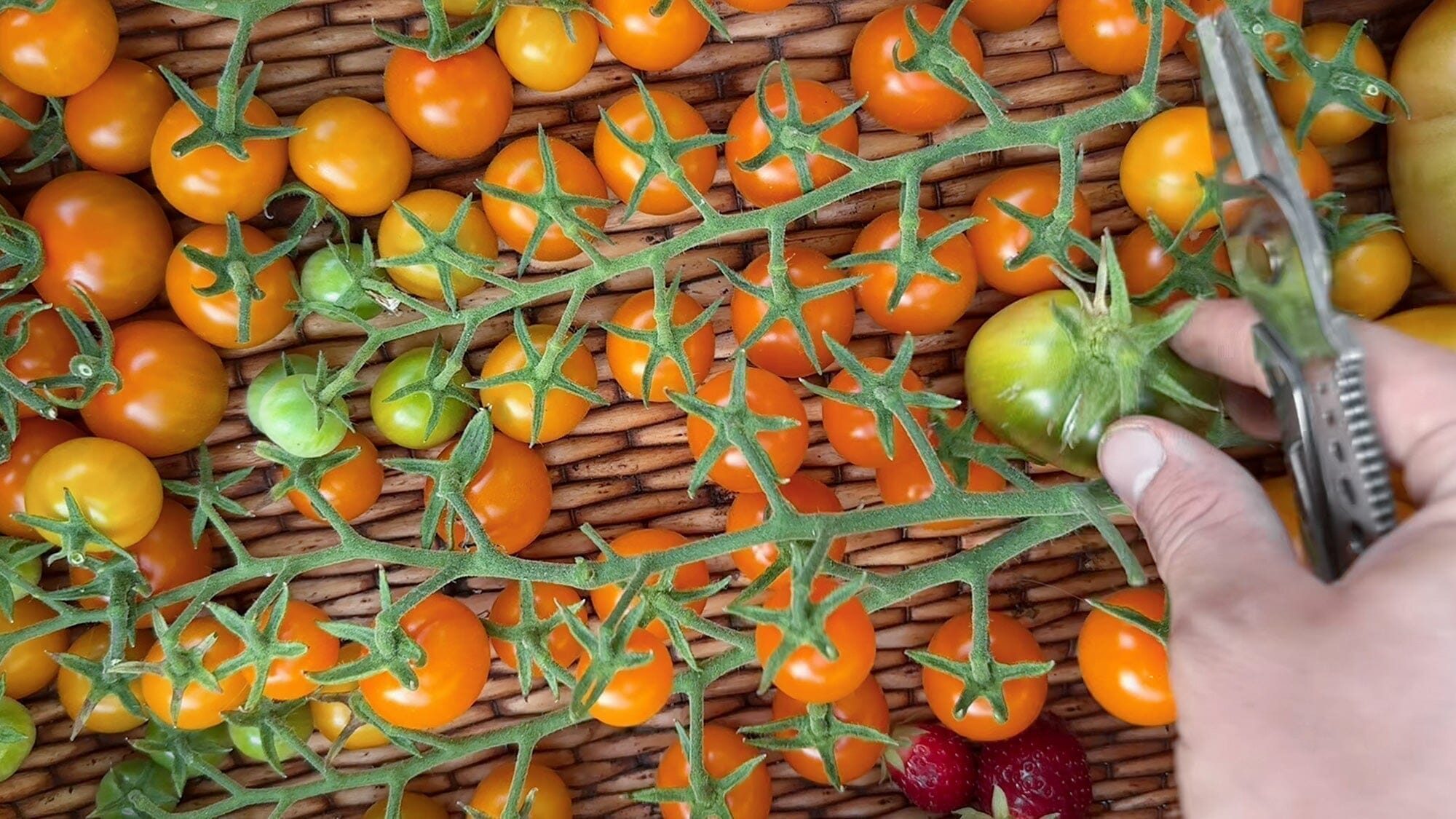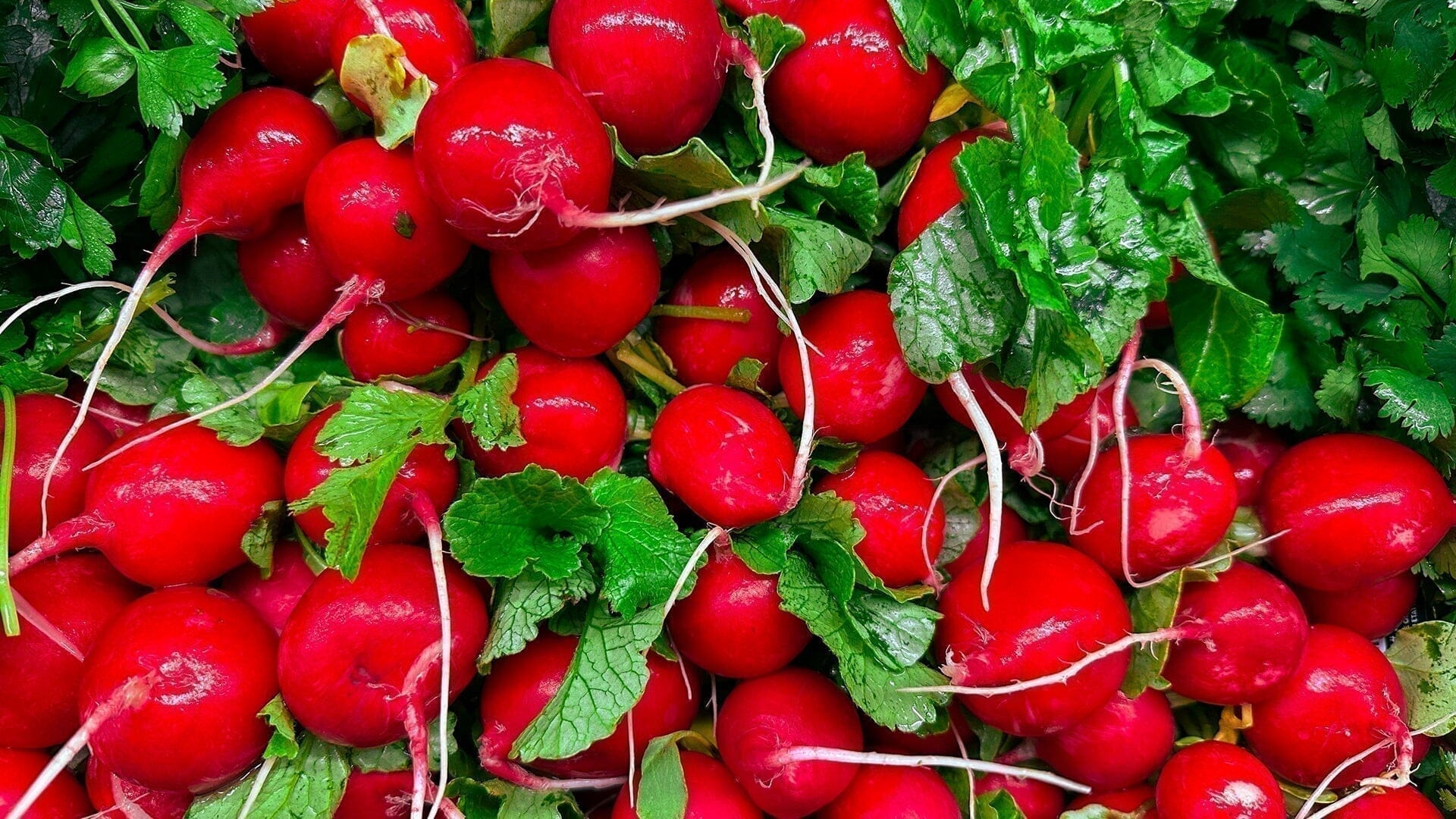Story by Reana Kim, Share a Seed
Photos by Hannah Packman, Reana Kim, Emilia Kawashima
“Don’t Farm Naked!”
Picture it: rich, black, glistening soil contrasts against neat rows of perfectly spaced plants arranged by type and size. Not a weed is in sight. The garden is Instagram-worthy in its tidiness. If that sounds like the garden of your dreams, I’ve got some bad news for you – nature is many things, but tidy is rarely one. And so, here I will invoke one of my favorite agricultural adages to set the theme for this post: Don’t Farm Naked! It’s a phrase made famous by the sustainable agriculture group Practical Farmers of Iowa, and it refers to the importance of keeping your soil covered at all times. Enter: Cover crops. While cover cropping may be more common among farmers than your average gardener, Share a Seed believes that cover cropping is an easy way for growers at any scale to improve sustainability and help keep nutrients in the soil where they belong.

What Is A Cover Crop?
Typically planted between harvests or during the growing off-season, cover crops are temporary plants that provide myriad benefits. While most cover crops are annuals, there are a few perennials that growers may use for living mulch, erosion control, or biomass production (e.g., Medium Red Clover, Crown Vetch, and Vernal Alfalfa).
Key Benefits of Cover Cropping
- Soil nutrient enrichment
- Erosion reduction
- Weed suppression
- Reducing disease and pests
- Pollinator support
Because there are many choices a grower can make when it comes to cover crops, the first step in cover crop planning should be to assess the unique needs of your garden (and soil).
How To Get Started With Cover Crops
While a comprehensive soil analysis might be the most thorough tool for understanding the state of your soil (soil analysis can often be done for free or low cost through your local cooperative extension program), you should be able to get a good idea of your soil’s needs just by observing. For example, if your soil looks pale and your plants rarely produce full flushes of fruits, veggies, or flowers, you may have a nutrient problem. If your plants look healthy, but you’re still not getting strong production from your flowering veggies, you could have a pollinator deficiency. Are you overrun with weeds and pests? There’s a cover crop mix for that, too.
After you determine your needs, the next thing to think about is your planting pattern. Do you plan to plant a fall crop? When do the first and last frosts typically occur in your area (check out this handy USDA hardiness map if you don’t know)? Do you plan to rest a plot or growing area over the summer? Certain cover crops perform best in summer (e.g., buckwheat, cowpeas, millet, sorghum-sudangrass hybrids, and soybeans) while others are better suited for planting in fall/over winter (e.g., crimson and red clover, forage radish, hairy vetch, winter rye, and winter wheat). Choosing the plants best suited for your region and the season in which you’ll plant them will give you the best chances of success with your cover cropping.
Examples Of Cover Crops
Cover crop mixes should achieve specific goals and be suitable for the season and region where you’re planting. Mixes may include grass, brassicas, and legumes – but species that provide little biomass or decompose quickly (brassicas) should always be the smallest percentage of a mixture.

Nutrient Boosting Cover Crops
Winter Pea, Yellow Mustard, & Crimson Clover
Cover crops regenerate your soil by holding nutrients underground (preventing them from leaching into waterways) and, in the case of legumes, by taking nitrogen from the air and bringing it to the soil where plants can access it. Cover crops foster a diverse soil microbiome full of beneficial bacteria and fungi, which are excellent nutrient cyclers. These microorganisms feed on the carbohydrates plants release through their roots, unlocking nutrients in the soil and converting them to more usable forms for the plants. Recommended cover crops for nutrient boosting include Winter Pea, Yellow Mustard, and Crimson Clover.

Erosion Reduction Cover Crops
White Dutch Clover, Winter Oats, & Winter Rye
The nutrient-rich organic, or “topsoil,” layer of your soil is only 2-3 inches deep and can be easily blown or washed away if your growing area is left uncovered. Thanks to the nutrients and vibrant living biomass they produce, cover crops act as a living mulch and help keep your precious topsoil in place even in extreme weather conditions. Erosion prevention benefits plants, soil, and our waterways. While nutrients like nitrogen and phosphorus may be great for our gardens, they can be damaging to aquatic life and drinking water. Building healthy soils that can resist erosion ensures that nutrients stay in the soils and out of our waterways. Recommended cover crops for erosion reduction include White Dutch Clover, Winter Oats, and Winter Rye.

Weed Suppression Cover Crops
Winter Oats, Winter Pea, & Winter Rye
Fast-growing cover crops with high biomass will outcompete weeds for nutrients, space, and light. The leafy canopy of a cover crop mix absorbs most of the available red light in the visible spectrum, which weed seeds need to germinate. When cover crops die back or are terminated, their mulch keeps the soil shady and cool, further helping to block the triggers needed to start weed seed germination. Many cover crops are also naturally allelopathic, releasing chemical compounds from their roots that can directly inhibit the growth of weeds. Recommended cover crops for weed suppression include Winter Oats, Winter Pea, and Winter Rye.

Cover Crops That Reduce Pests and Disease
Daikon Tillage Radish & Yellow Mustard
After a heavy rain storm, uncovered soil can sometimes form a hardened top layer (particularly if you step in your planting area, which you should always try to avoid!) that prevents future rains from fully absorbing. This hardening can cause rainwater to splash back up onto your plants, spreading soil-borne pathogens. When mulched, cover crops help prevent this hardened layer from forming and protect your plants from disease.
Certain cover crops, particularly brassicas (e.g., canola, mustard, and forage radish), have a biofumigation ability that prevents and destroys the cycles of some soil-borne diseases and pests, including parasitic root-knot nematodes and wilts like Fusarium and Verticillium. The plants use this ability to dissuade herbivores from munching on them and activate it when chopped or mulched. The sulfur compound (isothiocyanate) created during mulching acts as a natural fumigant. It’s also what gives these plants their hot, pungent taste! Recommended cover crops for reducing pests and disease include Daikon Tillage Radish and Yellow Mustard.

Cover Crops That Support Pollinators
White or Crimson Clover, Buckwheat, & Hairy Vetch
Flowering cover crops have the added benefit of providing food and habitat for pollinators and beneficial insects, enriching the entire ecosystem around your growing space. Mixing quick flowering cover crops with smaller buds like buckwheat with a larger flowering crop like clover can provide a habitat for local pollinators. Recommended cover crops for boosting pollinators include White or Crimson Clover, Buckwheat, and Hairy Vetch.

How To Start Cover Cropping
Plant, Trim, Flip, Repeat!
While cover-cropping around existing plants is possible, the easiest method is to start cover cropping once you know you’re done actively growing in the space for a few months. If you’re in an area where fall crops tend to last late into the year, you can start cover cropping a portion of your growing space and then fill in the rest when your fall plants are no longer productive.
Once you’re ready to start your cover crops, clear your plot of crops and weeds and loosely broadcast your seed mix over the soil. If your growing area is compacted, you can use a garden hoe to loosen the soil before spreading your cover crop and/or lightly scratch in the cover crop using a cultivator. Water the cover crop like any other seeds until winter weather approaches. Cover crops that winter-kill (e.g., Spring Oats, Oilseed Radish) once the frost comes will provide protective biomass for your soil, while other cover crops are more frost-hardy and will resume growing in the spring (e.g., Hairy Vetch, Rye).
Once spring arrives and you’re ready to start planting, do NOT pull up your cover crop! Remember, those cover crop roots are aerating your soil and delivering moisture and nutrients, so we want to leave them in the ground. First, give your cover crop a trim--depending on which crops you planted and when your cover crops may reach several feet in height by spring. Use a pair of garden shears to bring your cover crops down to a stubble of about an inch or two, then get ready to flip! Grab a shovel and carve out small sections (no more than six inches deep). Loosen a section, then flip it over right back in the same spot, stubble side down. Flipping the cover crop keeps the deepest roots in the ground and exposes a layer of nutrient-enriched soil where you can plant your spring crops. Meanwhile, the overturned stubble layer will continue to decay, further enriching your soil from below!
Once you're done planting your new seeds, cover that soil again with your preferred natural medium (e.g., straw, leaf litter, untreated mulch). And always remember, Don’t Farm Naked!
ABOUT
Reana is a DC-based policy and communications professional dedicated to making the food and farm system more equitable and sustainable. She has worked on food, agriculture, and social welfare issues for over ten years across three major US metro areas (Chicago, NYC, DC). Reana is master gardener who serves on the board for the Farmers Market Coalition and Slow Food DC and currently works in organic agriculture. She launched the Share a Seed project in the early days of the coronavirus pandemic to address the simultaneous loss of resources and rise in gardening interest. Reana loves connecting to fellow community members and showing that there is no one "type" of gardener, farmer, or outdoor enthusiast – getting your hands dirty is for everyone.
Follow along Share a Seed's Journey



